Greg Cosell's NFL Draft preview: Running backs highlight Day 2 and 3 sleepers
Day two of the NFL draft will feature Dalvin Cook, among other good players who did not go in the first round.
There are plenty of running backs after Cook who will go on the second and third days of the draft who jumped out to me as I watched film. It’s a very deep position in this draft.
This isn’t a list of the 10 best players available after the first round (read Eric Edholm’s list of best available here), but 10 of the players who stood out when I watched film. These are some favorite prospects of mine who will go on the second and third day, players you can keep an eye out for as you watch the rest of the draft unfold:
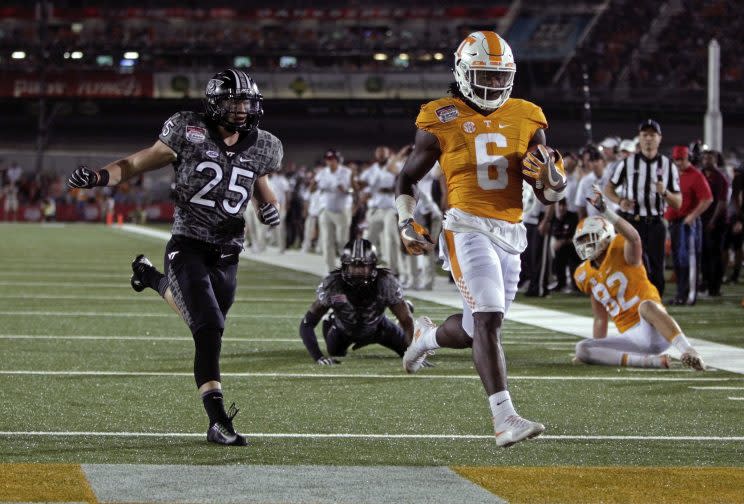
TENNESSEE RB ALVIN KAMARA
Kamara was a popular name among draft analysts, and there’s a lot to like about his game. He’s got good size, and is fluid and smooth with an easy change of direction and a slashing running style. There’s good natural quickness and short area burst through the point of attack. He has the ability to get through small creases at the point of attack, which is crucial in the NFL. You can see that on this touchdown against Alabama:
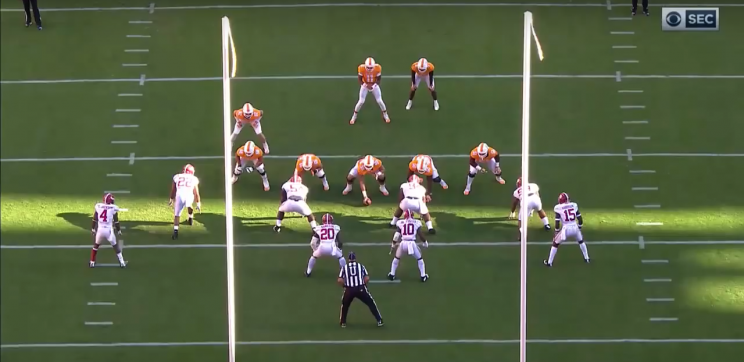
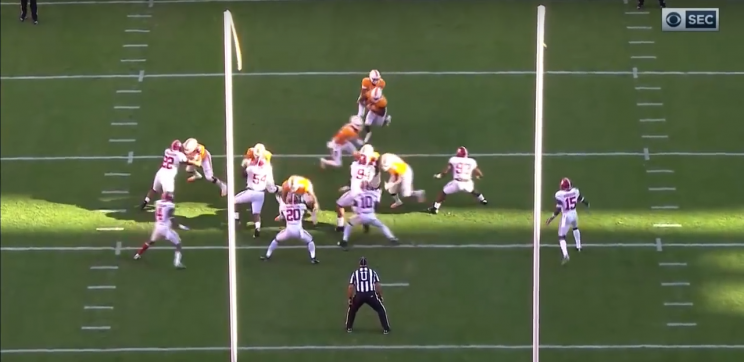
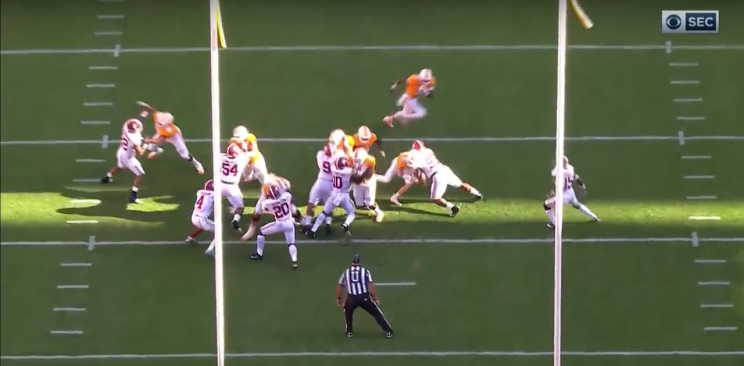

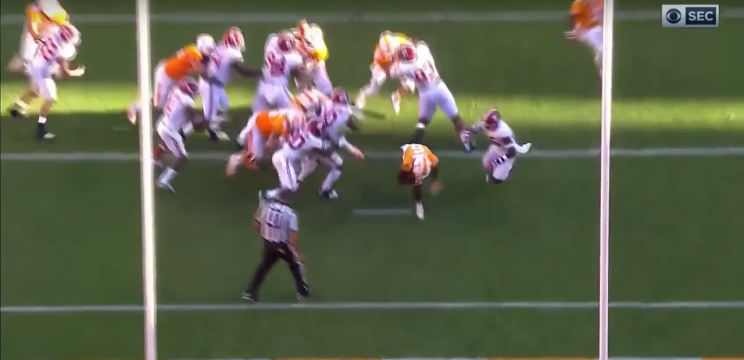
Kamara also provides multiple receiving options too. He has good hands and can detach from the formation.
Kamara has drawbacks. He runs too high at times and fumbles are a significant concern. However, Kamara can be a primary back in an offense that uses a high percentage of “11” personnel with one back, one tight end and three receivers. I don’t think he’s a foundation back – you’re not going to set your offense through him, like an Ezekiel Elliott or even how the Jacksonville Jaguars will presumably use Leonard Fournette – but he can be a good back. Durability will be a concern, though.
OHIO STATE RB/WR CURTIS SAMUEL
I think Tyreek Hill’s success last season makes Samuel a very intriguing prospect. My feeling is that Samuel ultimately transitions as a receiver and not a running back, but he gives an offense outstanding alignment versatility in the backfield and as a slot receiver, like Hill did with the Kansas City Chiefs last season.
Samuel isn’t big but he has explosive speed. As a runner, he can get to the perimeter and has the lateral juice to make defenders miss on the second and third level. As a receiver, he has an excellent feel for route running, and great vertical speed and lateral quickness in and out of breaks.
On this long touchdown against Bowling Green, Samuel shifted before the snap from the backfield to the slot to the right of the formation, then his inside slant route beat the safety and he used his speed to run away from the defense.
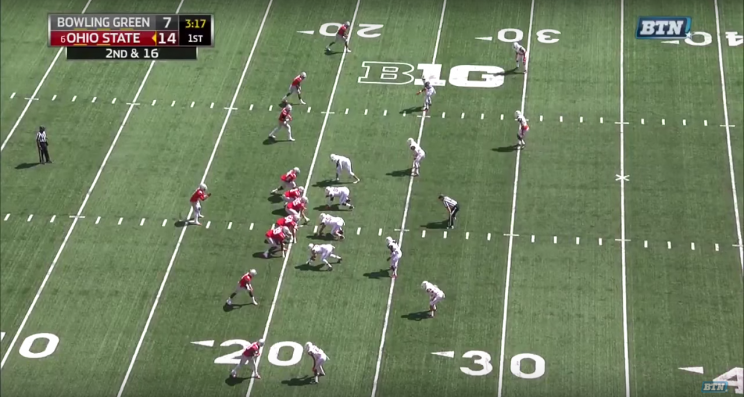

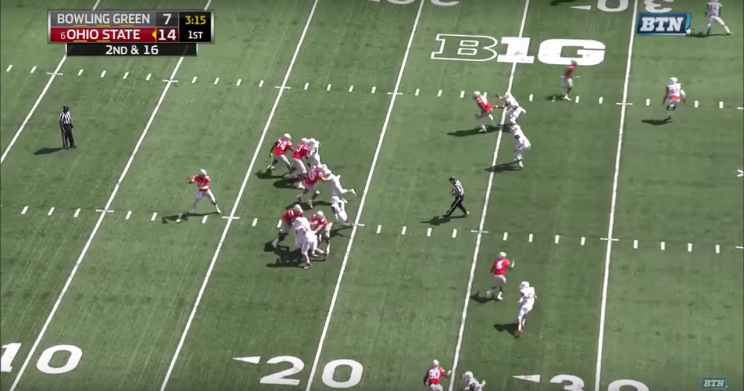


COLORADO CB AHKELLO WITHERSPOON
At almost 6-3, Witherspoon has outstanding length for the cornerback position, with long arms. For a corner as tall as he is, he has naturally fluid movement with smooth hips and an easy transition. He’s very comfortable in press man coverage. At times he tended to lean back on his heels in off coverage, which caused some balance and change of direction issues, and he needs to get better locating the ball on vertical routes.
Overall, Witherspoon could be a foundational corner for “Cover 3” and “Cover 1” defenses like the Atlanta Falcons, Seattle Seahawks and now the San Diego Chargers with Gus Bradley running their defense, due to his length and athleticism.
ARKANSAS WR KEON HATCHER
Hatcher, at a tick over 6-foot-1 and 212 pounds, has good size and a strong fame. He was effective working underneath on drive routes and shallow crossers. He’s not sudden and explosive, but he has some vertical ability too.
The question with Hatcher is his ability to separate against quality man coverage since he’s not explosive or sudden in his movement. But he presents similarities to NFL receivers like Rishard Matthews and Brandon LaFell with route running savvy and good hands. He’s a very intriguing prospect who could develop into a very solid player with coaching and development.
AUBURN DT MONTRAVIUS ADAMS
The more I watched Adams, the more I liked him as a prospect. He played with a desired combination of quickness and strength. I see some similarities to Sylvester Williams, who was a first-round pick by the Denver Broncos, or even Tennessee Titans tackle Jurrell Casey in that he has the athleticism and movement to align in multiple positions and be disruptive.
Athleticism gives Adams a chance to be an effective multi-positional defensive lineman who can play in multiple fronts and sub-packages. He also has the kind of natural lateral quickness to develop into a quality inside pass rusher in the NFL.
HOUSTON LB TYUS BOWSER
I think Bowser is a multi-dimensional outside linebacker prospect and has the skill set to develop into a complete player. He flashed the sudden twitch and edge bend flexibility, along with speed, to develop into a quality NFL pass rusher.
Bowser can also drop and cover. He has a lot of upside as he continues to learn and develop. It will likely take some time, but he has good traits including exceptional agility for his size (almost 6-3, 247 pounds) that he’ll be a good project as a 3-4 outside linebacker (or even a 3-4 inside linebacker like Ryan Shazier, though that would take even more time).
USC RB JUSTIN DAVIS
Davis might have had a big senior season, but an ankle injury derailed that. But he has a lot of strong running traits that transition well to the NFL.
Davis is a slashing runner who has experience in multiple running schemes, with some home-run ability and receiving ability that can be cultivated and developed in the pros. I believe, due to his explosive traits plus a competitiveness and toughness that teams like, he can be a very good NFL back. He’ll probably be a complementary back who at times can be used as a primary back.
TEXAS RB D’ONTA FOREMAN
If you like runners with power and a downhill mentality, Foreman is that player. He runs with good pad level, runs through contact and sheds tacklers, but still has quick feet for a big back. He can stop and start well and changes directions well too. He ran with light feet, excellent balance and body control.
Foreman still needs a lot of work in pass protection, and that will limit his snaps until he dramatically improves. Foreman at this point offers almost no value in the pass game. He’ll be a litmus test for the NFL in regards to the value of a base personnel foundation back. Can he be a LeGarrette Blount, who is situational and game specific? Is he Eddie Lacy, who can carry it 15-20 times or more in certain games? Maybe teams will look at Foreman and think he can lose 15 pounds (he’s 233 now) and still be a big back but run with more quickness and fluidiity? I like Foreman, and we’ll see which NFL teams see him as a fit.
TENNESSEE WR JOSH MALONE
At almost 6-3 and 208, Malone is a well-built receiver with intermediate and vertical ability. His stride length eats up the cushion and gets on top of coverage corners in the vertical game. He can also make contested 50/50 catches on deep balls with his size and hands.
Malone was inconsistent at times with too many drops on balls he should have caught. he needs refinement as an intermediate route runner to create separation against man coverage. He’ll need refinement overall, but he has the size and physical traits to develop into a productive NFL receiver. The size-speed profile is intriguing.
YOUNGSTOWN STATE DE AVERY MOSS
Moss could be an NFL starter and a good player, mostly because he might be able to fit in any number of spots. He could be a 4-3 defensive end or an outside linebacker in a 3-4. At 264 pounds he has the athleticism and natural bend to develop into a quality edge rusher.
Moss needs to develop a wider array of pass rush moves to be effective consistently in the NFL. He’s a good athlete with little refinement as a pass rusher at this point, but you can see the potential.
More NFL draft breakdowns from Greg Cosell:
• Clemson QB Deshaun Watson
• North Carolina QB Mitchell Trubisky
• Notre Dame QB DeShone Kizer
• Texas Tech QB Patrick Mahomes and Cal QB Davis Webb
• LSU RB Leonard Fournette
• Stanford RB Christian McCaffrey
• Oklahoma RB Joe Mixon
• Florida State RB Dalvin Cook
• Clemson WR Mike Williams
• Western Michigan WR Corey Davis
• Texas A&M DE Myles Garrett and the defensive line class
• Alabama TE O.J. Howard and the tight end class
• Washington WR John Ross and the receivers class
• Michigan DB Jabrill Peppers and the defensive backs class
• Alabama LB Reuben Foster and the inside linebacker class
– – – – – – –
NFL analyst and NFL Films senior producer Greg Cosell watches as much NFL game film as anyone. Throughout the season, Cosell will join Shutdown Corner to share his observations on the teams, schemes and personnel from around the league.



